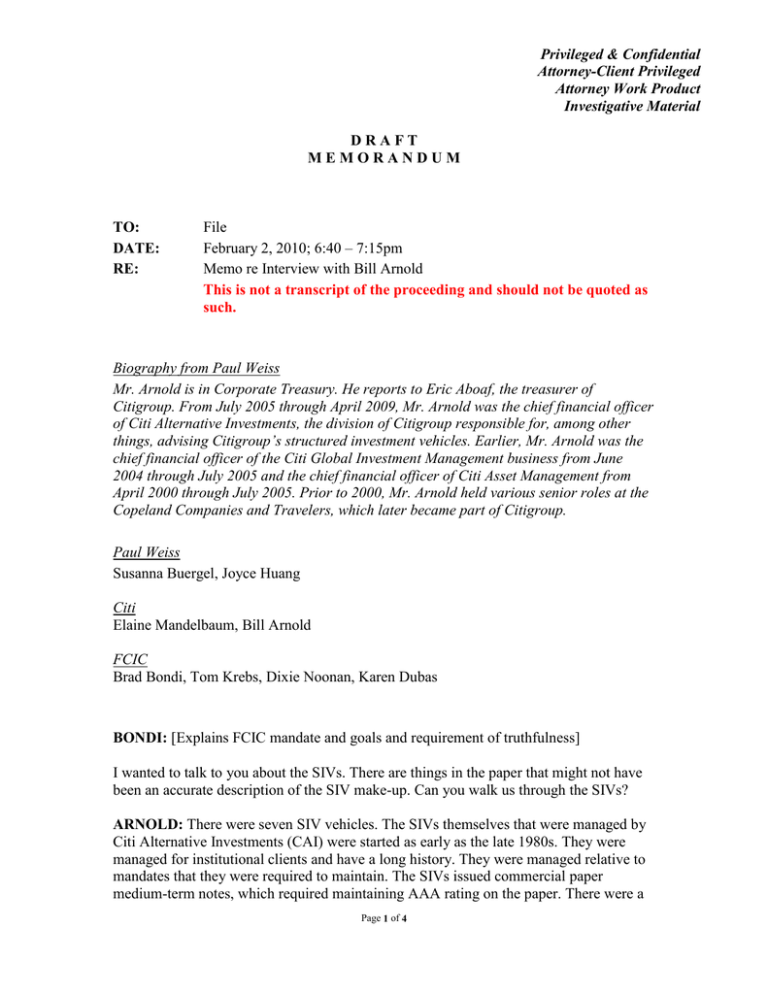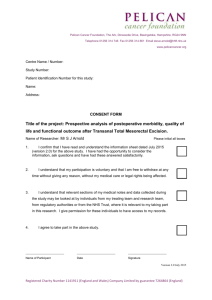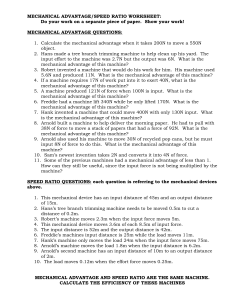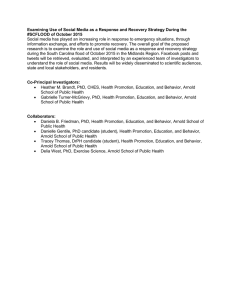File February 2, 2010; 6:40 – 7:15pm
advertisement

Privileged & Confidential Attorney-Client Privileged Attorney Work Product Investigative Material DRAFT MEMORANDUM TO: DATE: RE: File February 2, 2010; 6:40 – 7:15pm Memo re Interview with Bill Arnold This is not a transcript of the proceeding and should not be quoted as such. Biography from Paul Weiss Mr. Arnold is in Corporate Treasury. He reports to Eric Aboaf, the treasurer of Citigroup. From July 2005 through April 2009, Mr. Arnold was the chief financial officer of Citi Alternative Investments, the division of Citigroup responsible for, among other things, advising Citigroup’s structured investment vehicles. Earlier, Mr. Arnold was the chief financial officer of the Citi Global Investment Management business from June 2004 through July 2005 and the chief financial officer of Citi Asset Management from April 2000 through July 2005. Prior to 2000, Mr. Arnold held various senior roles at the Copeland Companies and Travelers, which later became part of Citigroup. Paul Weiss Susanna Buergel, Joyce Huang Citi Elaine Mandelbaum, Bill Arnold FCIC Brad Bondi, Tom Krebs, Dixie Noonan, Karen Dubas BONDI: [Explains FCIC mandate and goals and requirement of truthfulness] I wanted to talk to you about the SIVs. There are things in the paper that might not have been an accurate description of the SIV make-up. Can you walk us through the SIVs? ARNOLD: There were seven SIV vehicles. The SIVs themselves that were managed by Citi Alternative Investments (CAI) were started as early as the late 1980s. They were managed for institutional clients and have a long history. They were managed relative to mandates that they were required to maintain. The SIVs issued commercial paper medium-term notes, which required maintaining AAA rating on the paper. There were a Page 1 of 4 Privileged & Confidential Attorney-Client Privileged Attorney Work Product Investigative Material number of constraints and diversification requirements. The investments that SIVs held were all securities. 57% were senior debt issued by financial institutions (a figure from the June column). BONDI: Did you have any Lehman Brothers debt? ARNOLD: There was no Lehman debt that I know of. The only credit impairment in the SIVs’ history was with WaMu. The average credit quality in the SIVs’ portfolio was very high. The entire portfolio was A or higher. There is nothing significantly different between the investment mixes of each of the seven SIVs. BONDI: Can we get a snapshot for June 30, 2008 for the composition of each individual SIV? All seven SIVs were created in the 1980s? ARNOLD: The first was started in the 1980s. I don’t know what happened to it. Beta was created in the late 1980s or early 1990s. Centauri was started in the early 1990s as well. Vetra is the smallest, and was created for Tokyo Marine around 2006. Zela was created in 2006 or 2007 as well. Sedna was created in the early 2000s. Both Zela and Sedna were created for a cross-section of investors. BONDI: Can we get a list of investors in each of the SIVs for June 30, 2008? BUERGEL: Sure. It will be a cross section for a moment in time. BONDI: When did each SIV come on balance sheet? ARNOLD: All of them came on the balance sheet at the same time: 4th quarter of 2007. BONDI: Were you part of the decision to bring them on balance sheet? ARNOLD: I was part of the process. BONDI: Who would have been part of decision making process? ARNOLD: Vikram Pandit (during his transition period), Gary Crittenden, and John Havens (CEO of CAI). BONDI: Were you briefed on the reason for bringing them on the balance sheet? Page 2 of 4 Privileged & Confidential Attorney-Client Privileged Attorney Work Product Investigative Material ARNOLD: The rating agencies looking after the SIVs were threatening to downgrade the SIVs (the commercial paper and medium-term notes were currently rated Aaa). To continue the orderly liquidation of the SIVs, Citi had to provide a support mechanism. Moody’s and S&P would have been the rating agencies involved. BONDI: The decision to bring the SIVs on the balance sheet was a voluntary decision? ARNOLD: Correct, it was voluntary. The primary reason was that if SIVs were downgraded, would have created a disorderly liquidation. It was a reputational decision. Citi continued its liquidation plan throughout 2008 with sales. By the end of 2008, the total assets were about $16.5 billion. Citi agreed to purchase assets from the vehicles, made payments to the vehicles, and wound the SIVs down. BONDI: What stage of the process are you in? ARNOLD: There are maybe three companies left. They are essentially shell companies that are paying off medium-term notes to investors. BONDI: What’s the average asset mix? What was breakdown of nonprime? ARNOLD: The concept of nonprime does not exist outside of the United States. I think that all of these were prime. If you look at footnote #2 on the sheet, it says that the SIVs have no direct U.S. subprime assets. BONDI: Was risk management involved in the decision to bring the SIVs on the balance sheet? ARNOLD: Risk management would have been involved, yes. The Chief Risk Officer and Brian Leach did become involved during the end. BONDI: Who had the daily risk management responsibilities with respect to the SIVs? ARNOLD: The risk managers during this period were Jolie Eisner and Senthil Kumar. BONDI: Prior to late 2007, was there ever a discussion about bringing the SIVs onto the balance sheet? ARNOLD: All discussions were focused on not bringing the SIVs onto the balance sheet. BONDI: When was the shift in discussions? ARNOLD: It happened in late November or early December when the rating agencies Page 3 of 4 Privileged & Confidential Attorney-Client Privileged Attorney Work Product Investigative Material threatened to downgrade the debt of those vehicles. BONDI: What were the Asta/MAT mutual funds? ARNOLD: They were municipal funds sold primarily to global wealth management clients in the United States from within Citi Alternative Investments (CAI). BONDI: Did Falcon have any subprime exposure? ARNOLD: No. KREBS: CAI would issue publications with an outlook for the short-term and long-term economy. In the June/July 2005 publication (or April 2006 publication), CAI under Falcon projected that the U.S. housing market was due for a major correction. BUERGEL: We can get you that publication, but we’d like to know where you saw the quote so we know where to look. NOONAN: Jaime Dimon said that SIVs have no business purpose. ARNOLD: I’m not sure what he was saying. The client demand was the business purpose. The SIVs were based on institutional investor demand for the product. BONDI: How much did Citi earn from SIVs throughout their history? We’d like to understand what it ultimately cost them when they came on the balance sheet. ARNOLD: Informally, it was $250 million pre-tax, over about 5-6 years, cumulatively. This was an investment management product. There was a P&L charge for about $3 billion for the SIVs. Their notational value is about $22 billion. Even factoring in potential impairments, we could still earn it back. Expected losses are about $1 to $1.5 billion. The expectation is that we’ll fully recover the loss that we’ve taken on a mark-tomarket basis as the notes mature. BONDI: If you could put in writing the response to that question about the SIVs so that we have something official from Citi with answers to the question. That story would be helpful if you could submit it to us in writing. ARNOLD: Hopefully that clears up some of the misperceptions about SIVs. BONDI: [Explanation of confidentiality] 4827-3346-5608, v. 1 Page 4 of 4





